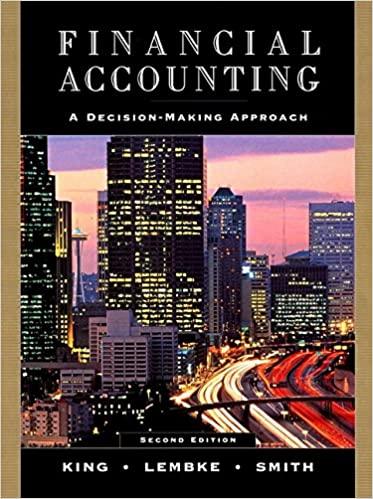





Required information Problem 5-2AA Periodic: Alternative cost flows LO P3 [The following information applies to the questions displayed below.] Warnerwoods Company uses a periodic inventory system. It entered into the following purchases and sales transactions for March. Units Sold at Retail Units Acquired at Cost 140 units @ $75 per unit 440 units @ $80 per unit Date Activities Mar. 1 Beginning inventory Mar. 5 Purchase Mar. 9 Sales Mar. 18 Purchase Mar. 25 Purchase Mar. 29 Sales 460 units @ $110 per unit 200 units @ $85 per unit 280 units @ $87 per unit 240 units @ $120 per unit 700 units Totals 1,060 units For specific identification, the March 9 sale consisted of 90 units from beginning inventory and 370 units from the March 5 purchase; the March 29 sale consisted of 80 units from the March 18 purchase and 160 units from the March 25 purchase. 3. Compute the cost assigned to ending inventory using (a) FIFO, (b) LIFO, (C) weighted average, and (d) specific identification. (Round your average cost per unit to 2 decimal places.) a) Periodic FIFO Cost of Goods Available for Sale Cost of Goods Sold Ending Inventory # of units Cost per unit Cost of Goods Available for Sale # of units sold Cost per unit Cost of Goods Sold # of units in ending inventory Cost per unit Ending Inventory 140 $ 75.00 $ 10,500 $ 0.00 $ 0 $ 0.00 $ 0 Beginning inventory Purchases: March 5 440 0.0 0 $ 0 $ $ March 18 200 85.00 $ 0.00 O $ 0.00 0 35,200 17,000 24,360 $ 87,060 March 25 280 $ 87.00 $ 0.00 0 Total 1,060 0 0 b) Periodic LIFO Cost of Goods Available for Sale Cost of Goods Sold Ending Inventory # of units Cost per unit Cost of Goods Available for Sale # of units sold Cost per unit Cost of Goods Sold # of units in ending inventory Cost per unit Ending Inventory 140 $ 75.00 $ 10,500 0 Beginning inventory Purchases: March 5 440 $ 80.00 0 March 18 200 0 $ 85.00 $ 87.00 35,200 17,000 24,360 $ 87,060 March 25 280 0 Total 1,060 0 0 d) Specific Identification Cost of Goods Available for Sale Cost of Goods Sold Ending Inventory # of units Cost per unit Cost of Goods Available for Sale # of units sold Cost per unit Cost of Goods Sold # of units in ending inventory Cost per unit Ending Inventory 140 $ 75.00 $ 10,500 $ 75.00 $ 0 $ 75.00 $ 0 Beginning inventory Purchases: March 5 440 80.00 0 $ 80.00 $ 80.00 $ 85.00 March 18 oo 200 AAA 85.00 0 $ 85.00 | EAEA 35,200 17,000 24,360 $ 87,060 March 25 280 87.00 87.00 0 $ 87.00 0 Total 1,060 0 0 4. Compute gross profit earned by the company for each of the four costing methods. (Round your average cost per unit to 2 decimal places and final answers to nearest whole dollar.) FIFO LIFO Weighted Average Specific Identification Sales Less: Cost of goods sold Gross profit $ 0 $ 0 $ 0 $ 0 c) Average Cost Cost of Goods Sold Ending Inventory Cost of Goods Available for Sale Cost of Average Goods # of units Cost per Available unit for Sale Average # of units sold Cost per Cost of Goods Sold # of units in ending inventory Average Cost per unit Ending Inventory Unit 140 $ 10,500 Beginning inventory Purchases: March 5 440 March 18 200 35,200 17,000 24,360 $ 87,060 March 25 280 Total 1,060 $ 0 $ 0












